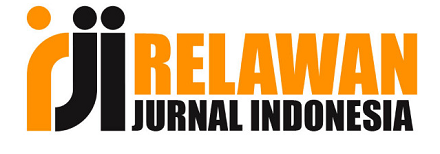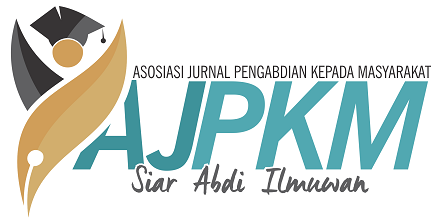Peningkatan Kualitas Hidup Pasien Kanker Payudara Melalui Program BESTCARE (Breast Cancer Wound and Palliative Care)
DOI:
https://doi.org/10.33474/jipemas.v3i1.4847Keywords:
breast cancer, quality of life, bestcareAbstract
The incidence of breast cancer increase every year, if didn’t controlled by the WHO estimates that there will be an increase of 30% and 70% in 2030. The patients often experience are complex problems such as the lack of self-confidence, pain in wounds and aesthetic problems. Postoperative patients or chemotherapy need proper care in order to achieve a good quality of life. The BESTCARE program aims to improve the quality of life of breast cancer patients through activities that can be carried out by cadres and patients. The methods was lectures, demonstrations and practices. While the media used are lectures, demonstrations, practices and wound care. The material presented includes the incidence of breast cancer, understanding, risk factors, conscious examination steps, wound care with modern dressing. Results: The team succeeded in forming a cancer care health, knowledge and understanding of the cadre of mam health increased from 50% to 85%, health cadres were able to make conscious movements from before 55% to 90%, an increase in the number of visits, decreased pain scale and wound care progress with modern dressing. Conclusion: The program of activities carried out by the Bestcare team was able to be carried out properly and as expected improving the quality of life in palliative patients both in the clinic or home visit.References
Kartika, R. W. (2015). Perawatan Luka Kronis dengan Modern Dressing. Perawatan Luka Kronis Dengan Modern Dressing, 42(7), 546–550.
Kemenkes RI. (2013). Hilangkan mitos tentang kanker. www.depkes.go.id
Kemenkes RI. (2015). Panduan penatalaksanaan kanker payudara.
Ketut, N., & Ariani, P. (2017). Kebutuhan Spiritual Pada Pasien Kanker.
Lazelle-Ali, C. (2007). Psychological and physical care of malodorous fungating wounds. British Journal of Nursing, 16(Sup3), S16–S24. http://doi.org/10.12968/bjon.2007 .16.Sup3.24528
Lund-Nielsen, B., Müller, K., & Adamsen, L. (2005). Malignant wounds in women with breast cancer: feminine and sexual perspectives. Journal of Clinical Nursing, 14(1), 56–64. http://doi.org/10.1111/j.1365-2702.2004.01022.x
Piggin, C., & Jones, V. (2007). Malignant fungating wounds: an analysis of the lived experience. International Journal of Palliative Nursing, 13(8), 384–391. http://doi.org/10 .12968/ijpn.2007.13.8.24537
Regan, P. O. (2007). The impact of cancer and its treatment on wound healing
Tanjung, D. (2007). Perawatan luka kanker. Jurnal Keperawatan Rufaidah Sumatera Utara, 2(November), 82–89.
Utami, S. S. (2017). Aspek psikososial pada penderita kanker payudara 20(2), 65–74. http://doi.org/10.7454/jki.v20i2.503
Utari S. (2012). Pengaruh penyuluhan tentang deteksi dini kanker payudara terhadap keterampilan SADARI pada wanita usia subur di Sleman Yogyakarta. Stikes Aisyiyah Yogyakarta
Wiksuarini, E., Rochmawati, E., & Rahmah. (2018). Spiritualitas dan kualitas hidup pasien kanker. Dinamika Kesehatan, 9(2).
Downloads
Published
How to Cite
Issue
Section
License
.









